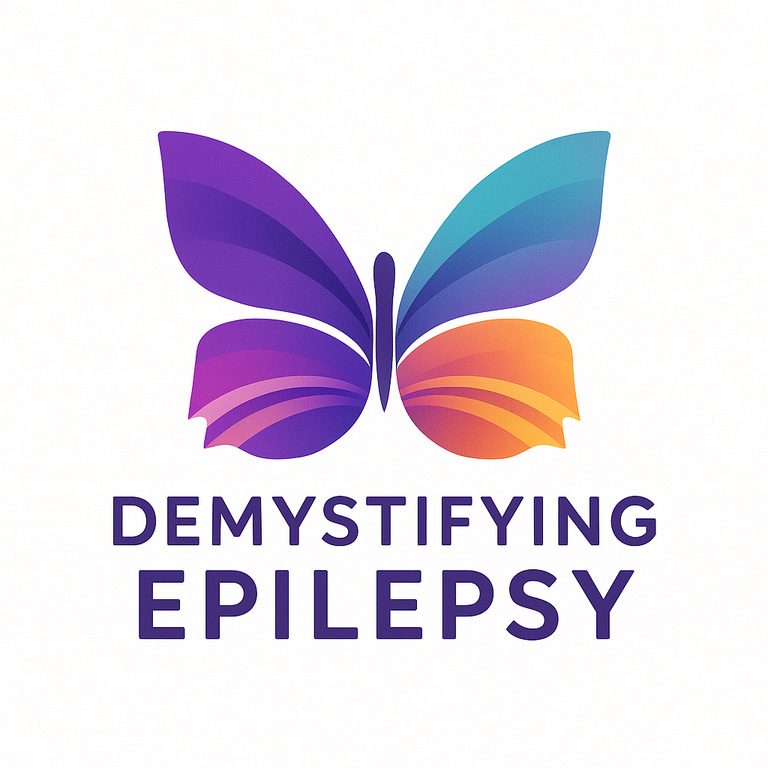Understanding Childhood Absence Epilepsy
Childhood Absence Epilepsy (CAE) is one of the most common forms of epilepsy in children, often misunderstood as daydreaming or inattention. This blog explains what CAE is, its typical symptoms, causes, and how it’s diagnosed. It also explores treatment options, prognosis, and the emotional impact on families. Written in simple, empathetic language, the post helps parents, teachers, and advocates recognize absence seizures early and support children in living full, confident lives.
Dr. Clotilda Chinyanya
11/15/20253 min read


What Is an Epilepsy Syndrome?
An epilepsy syndrome refers to a group of medical features that tend to occur together, such as the type of seizures, age of onset, and EEG (electroencephalogram) patterns. Recognizing a specific epilepsy syndrome helps doctors identify the best treatment plan and understand what the future may hold for a person’s seizures. Some epilepsy syndromes are self-limiting, meaning the seizures may stop with age, while others may persist into adulthood. The diagnosis can also help avoid medications that worsen certain seizure types and guide families toward early intervention and support. American Academy of Pediatrics ILAE
What Is Childhood Absence Epilepsy (CAE)?
Childhood Absence Epilepsy (CAE) is one of the most common pediatric epilepsy syndromes, accounting for about 10–17% of all childhood epilepsy cases. It typically begins between ages 2 and 13, most often around age 6 or 7. Up to 75% of children with CAE are girls. Most children (60%) outgrow CAE and the remaining 40% later develop other epilepsy types.
CAE is characterized by absence seizures, brief moments when a child suddenly stops what they’re doing and appears to “zone out.” During these episodes, the child is unaware of their surroundings and does not respond, even if you call their name. After a few seconds, they return to normal activity — often unaware that anything happened. Epilepsy Foundation ILAE
Meet Leo
Leo was a cheerful 7-year-old who loved building Lego castles. But his teacher noticed something odd during class, he would suddenly freeze mid-sentence or stop writing, his eyes fixed on the wall for about 10 seconds. Moments later, he’d resume as if nothing had happened. At first, everyone thought Leo was simply distracted. But as these “daydreams” happened dozens of times a day, his parents sought medical advice. An EEG test showed classic 3-Hz spike-and-wave patterns, confirming childhood absence epilepsy. With the right diagnosis and treatment, Leo’s seizures came under control and his focus and confidence returned.
What Causes CAE?
The exact cause of CAE isn’t fully understood, but genetics play an important role. Some children may carry mutations in genes like GABRA1, which influence how brain cells communicate through electrical signals. These changes can affect the thalamocortical system, a brain network that regulates rhythmic activity and consciousness.
While CAE often runs in families, it can occur without any family history of epilepsy. Environmental and developmental factors may also contribute. CURE Epilepsy
Recognizing the Symptoms
Children with CAE experience multiple absence seizures daily, sometimes 50 or more. Each seizure typically lasts 10 to 20 seconds and may include:
Blank staring or unresponsiveness
Eye fluttering or upward eye movement
Lip smacking, chewing, or small hand movements
A sudden stop in talking or activity
The child resumes normal activity immediately after the seizure and usually doesn’t recall it.
Children typically develop normally but may face learning, attention, or memory issues with frequent absence seizures.
While neurological exams and brain scans (CT or MRI) are typically normal, EEG testing is crucial for diagnosis. Hyperventilation during EEG often triggers absence seizures, helping clinicians confirm the condition.
Diagnosis and Testing
Diagnosis begins with observing and describing the spells. An EEG test reveals the distinctive 3-Hz generalized spike-and-wave discharges typical of CAE.
CT and MRI scans are generally unnecessary unless another cause is suspected.
Hyperventilation or photic stimulation (flashing lights) during EEG can help provoke and identify seizures.
Attention and learning assessments are important, as children with frequent seizures may experience cognitive effects.
Epilepsy Foundation CURE Epilepsy
How Is Childhood Absence Epilepsy Treated?
The goal of treatment is to stop the seizures and protect the child’s learning and quality of life. CAE is usually managed on anti-seizure medications, however, in rare cases where the seizures persist, a ketogenic diet may be considered. Epilepsy Foundation
Impact on Learning and Daily Life
Even though CAE seizures are short, their frequency can disrupt attention and memory. Teachers may mistake a child’s absence seizures for inattentiveness or daydreaming, leading to delayed diagnosis.
Children with frequent seizures may fall behind in reading, writing, and class participation. About 30–40% of children with CAE experience attention difficulties or mild learning challenges. Early treatment and collaboration between parents, neurologists, and schools can make a big difference.
What’s the Outlook for Children with CAE?
The prognosis for CAE is generally excellent.
Around 60–70% of children outgrow their seizures by adolescence.
About 10–15% may later develop other seizure types, such as generalized tonic-clonic or myoclonic seizures.
Ongoing monitoring helps ensure proper medication adjustment and cognitive support.
Most importantly, children like Leo can live full, active lives attending school, playing sports, and dreaming big once their epilepsy is managed. Epilepsy Foundation
Living with Hope
Childhood absence epilepsy can be frightening for families at first, but knowledge brings power. Understanding that these “blank stares” are seizures and that they can be treated transforms worry into confidence.
With early diagnosis, effective treatment, and support, children with CAE can thrive academically, socially, and emotionally.
💜 💜 Awareness leads to understanding, Learn how early diagnosis and the right care can make all the difference for children with absence epilepsy.
💜 💜 Awareness matters. Early recognition saves futures.
Be informed:
